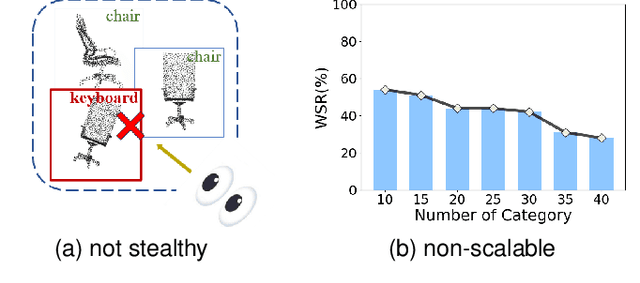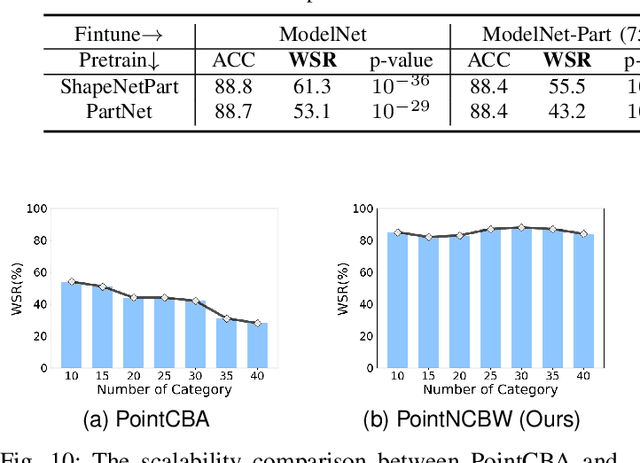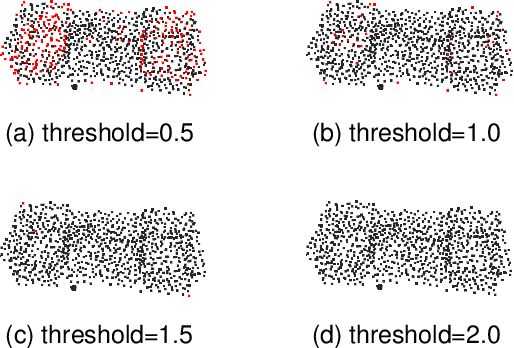Zhibo Wang
UniSearch: Rethinking Search System with a Unified Generative Architecture
Sep 10, 2025Abstract:Modern search systems play a crucial role in facilitating information acquisition. Traditional search engines typically rely on a cascaded architecture, where results are retrieved through recall, pre-ranking, and ranking stages. The complexity of designing and maintaining multiple modules makes it difficult to achieve holistic performance gains. Recent advances in generative recommendation have motivated the exploration of unified generative search as an alternative. However, existing approaches are not genuinely end-to-end: they typically train an item encoder to tokenize candidates first and then optimize a generator separately, leading to objective inconsistency and limited generalization. To address these limitations, we propose UniSearch, a unified generative search framework for Kuaishou Search. UniSearch replaces the cascaded pipeline with an end-to-end architecture that integrates a Search Generator and a Video Encoder. The Generator produces semantic identifiers of relevant items given a user query, while the Video Encoder learns latent item embeddings and provides their tokenized representations. A unified training framework jointly optimizes both components, enabling mutual enhancement and improving representation quality and generation accuracy. Furthermore, we introduce Search Preference Optimization (SPO), which leverages a reward model and real user feedback to better align generation with user preferences. Extensive experiments on industrial-scale datasets, together with online A/B testing in both short-video and live search scenarios, demonstrate the strong effectiveness and deployment potential of UniSearch. Notably, its deployment in live search yields the largest single-experiment improvement in recent years of our product's history, highlighting its practical value for real-world applications.
AFLoRA: Adaptive Federated Fine-Tuning of Large Language Models with Resource-Aware Low-Rank Adaption
May 30, 2025Abstract:Federated fine-tuning has emerged as a promising approach to adapt foundation models to downstream tasks using decentralized data. However, real-world deployment remains challenging due to the high computational and communication demands of fine-tuning Large Language Models (LLMs) on clients with data and system resources that are heterogeneous and constrained. In such settings, the global model's performance is often bottlenecked by the weakest clients and further degraded by the non-IID nature of local data. Although existing methods leverage parameter-efficient techniques such as Low-Rank Adaptation (LoRA) to reduce communication and computation overhead, they often fail to simultaneously ensure accurate aggregation of low-rank updates and maintain low system costs, thereby hindering overall performance. To address these challenges, we propose AFLoRA, an adaptive and lightweight federated fine-tuning framework for LLMs. AFLoRA decouples shared and client-specific updates to reduce overhead and improve aggregation accuracy, incorporates diagonal matrix-based rank pruning to better utilize local resources, and employs rank-aware aggregation with public data refinement to strengthen generalization under data heterogeneity. Extensive experiments demonstrate that AFLoRA outperforms state-of-the-art methods in both accuracy and efficiency, providing a practical solution for efficient LLM adaptation in heterogeneous environments in the real world.
Personalized Query Auto-Completion for Long and Short-Term Interests with Adaptive Detoxification Generation
May 27, 2025Abstract:Query auto-completion (QAC) plays a crucial role in modern search systems. However, in real-world applications, there are two pressing challenges that still need to be addressed. First, there is a need for hierarchical personalized representations for users. Previous approaches have typically used users' search behavior as a single, overall representation, which proves inadequate in more nuanced generative scenarios. Additionally, query prefixes are typically short and may contain typos or sensitive information, increasing the likelihood of generating toxic content compared to traditional text generation tasks. Such toxic content can degrade user experience and lead to public relations issues. Therefore, the second critical challenge is detoxifying QAC systems. To address these two limitations, we propose a novel model (LaD) that captures personalized information from both long-term and short-term interests, incorporating adaptive detoxification. In LaD, personalized information is captured hierarchically at both coarse-grained and fine-grained levels. This approach preserves as much personalized information as possible while enabling online generation within time constraints. To move a futher step, we propose an online training method based on Reject Preference Optimization (RPO). By incorporating a special token [Reject] during both the training and inference processes, the model achieves adaptive detoxification. Consequently, the generated text presented to users is both non-toxic and relevant to the given prefix. We conduct comprehensive experiments on industrial-scale datasets and perform online A/B tests, delivering the largest single-experiment metric improvement in nearly two years of our product. Our model has been deployed on Kuaishou search, driving the primary traffic for hundreds of millions of active users. The code is available at https://github.com/JXZe/LaD.
PRUNE: A Patching Based Repair Framework for Certiffable Unlearning of Neural Networks
May 10, 2025Abstract:It is often desirable to remove (a.k.a. unlearn) a speciffc part of the training data from a trained neural network model. A typical application scenario is to protect the data holder's right to be forgotten, which has been promoted by many recent regulation rules. Existing unlearning methods involve training alternative models with remaining data, which may be costly and challenging to verify from the data holder or a thirdparty auditor's perspective. In this work, we provide a new angle and propose a novel unlearning approach by imposing carefully crafted "patch" on the original neural network to achieve targeted "forgetting" of the requested data to delete. Speciffcally, inspired by the research line of neural network repair, we propose to strategically seek a lightweight minimum "patch" for unlearning a given data point with certiffable guarantee. Furthermore, to unlearn a considerable amount of data points (or an entire class), we propose to iteratively select a small subset of representative data points to unlearn, which achieves the effect of unlearning the whole set. Extensive experiments on multiple categorical datasets demonstrates our approach's effectiveness, achieving measurable unlearning while preserving the model's performance and being competitive in efffciency and memory consumption compared to various baseline methods.
Towards LLM Guardrails via Sparse Representation Steering
Mar 21, 2025Abstract:Large Language Models (LLMs) have demonstrated remarkable performance in natural language generation tasks, yet their uncontrolled outputs pose significant ethical and safety risks. Recently, representation engineering methods have shown promising results in steering model behavior by modifying the rich semantic information encoded in activation vectors. However, due to the difficulty of precisely disentangling semantic directions within high-dimensional representation space, existing approaches suffer from three major limitations: lack of fine-grained control, quality degradation of generated content, and poor interpretability. To address these challenges, we propose a sparse encoding-based representation engineering method, named SRE, which decomposes polysemantic activations into a structured, monosemantic feature space. By leveraging sparse autoencoding, our approach isolates and adjusts only task-specific sparse feature dimensions, enabling precise and interpretable steering of model behavior while preserving content quality. We validate our method on three critical domains, i.e., safety, fairness, and truthfulness using the open-source LLM Gemma-2-2B-it. Experimental results show that SRE achieves superior controllability while maintaining the overall quality of generated content (i.e., controllability and quality), demonstrating its effectiveness as a fine-grained and interpretable activation steering framework.
Can Small Language Models Reliably Resist Jailbreak Attacks? A Comprehensive Evaluation
Mar 09, 2025



Abstract:Small language models (SLMs) have emerged as promising alternatives to large language models (LLMs) due to their low computational demands, enhanced privacy guarantees and comparable performance in specific domains through light-weight fine-tuning. Deploying SLMs on edge devices, such as smartphones and smart vehicles, has become a growing trend. However, the security implications of SLMs have received less attention than LLMs, particularly regarding jailbreak attacks, which is recognized as one of the top threats of LLMs by the OWASP. In this paper, we conduct the first large-scale empirical study of SLMs' vulnerabilities to jailbreak attacks. Through systematically evaluation on 63 SLMs from 15 mainstream SLM families against 8 state-of-the-art jailbreak methods, we demonstrate that 47.6% of evaluated SLMs show high susceptibility to jailbreak attacks (ASR > 40%) and 38.1% of them can not even resist direct harmful query (ASR > 50%). We further analyze the reasons behind the vulnerabilities and identify four key factors: model size, model architecture, training datasets and training techniques. Moreover, we assess the effectiveness of three prompt-level defense methods and find that none of them achieve perfect performance, with detection accuracy varying across different SLMs and attack methods. Notably, we point out that the inherent security awareness play a critical role in SLM security, and models with strong security awareness could timely terminate unsafe response with little reminder. Building upon the findings, we highlight the urgent need for security-by-design approaches in SLM development and provide valuable insights for building more trustworthy SLM ecosystem.
Hiding Faces in Plain Sight: Defending DeepFakes by Disrupting Face Detection
Dec 02, 2024Abstract:This paper investigates the feasibility of a proactive DeepFake defense framework, {\em FacePosion}, to prevent individuals from becoming victims of DeepFake videos by sabotaging face detection. The motivation stems from the reliance of most DeepFake methods on face detectors to automatically extract victim faces from videos for training or synthesis (testing). Once the face detectors malfunction, the extracted faces will be distorted or incorrect, subsequently disrupting the training or synthesis of the DeepFake model. To achieve this, we adapt various adversarial attacks with a dedicated design for this purpose and thoroughly analyze their feasibility. Based on FacePoison, we introduce {\em VideoFacePoison}, a strategy that propagates FacePoison across video frames rather than applying them individually to each frame. This strategy can largely reduce the computational overhead while retaining the favorable attack performance. Our method is validated on five face detectors, and extensive experiments against eleven different DeepFake models demonstrate the effectiveness of disrupting face detectors to hinder DeepFake generation.
DiffPatch: Generating Customizable Adversarial Patches using Diffusion Model
Dec 02, 2024Abstract:Physical adversarial patches printed on clothing can easily allow individuals to evade person detectors. However, most existing adversarial patch generation methods prioritize attack effectiveness over stealthiness, resulting in patches that are aesthetically unpleasing. Although existing methods using generative adversarial networks or diffusion models can produce more natural-looking patches, they often struggle to balance stealthiness with attack effectiveness and lack flexibility for user customization. To address these challenges, we propose a novel diffusion-based customizable patch generation framework termed DiffPatch, specifically tailored for creating naturalistic and customizable adversarial patches. Our approach enables users to utilize a reference image as the source, rather than starting from random noise, and incorporates masks to craft naturalistic patches of various shapes, not limited to squares. To prevent the original semantics from being lost during the diffusion process, we employ Null-text inversion to map random noise samples to a single input image and generate patches through Incomplete Diffusion Optimization (IDO). Notably, while maintaining a natural appearance, our method achieves a comparable attack performance to state-of-the-art non-naturalistic patches when using similarly sized attacks. Using DiffPatch, we have created a physical adversarial T-shirt dataset, AdvPatch-1K, specifically targeting YOLOv5s. This dataset includes over a thousand images across diverse scenarios, validating the effectiveness of our attack in real-world environments. Moreover, it provides a valuable resource for future research.
PointNCBW: Towards Dataset Ownership Verification for Point Clouds via Negative Clean-label Backdoor Watermark
Aug 10, 2024



Abstract:Recently, point clouds have been widely used in computer vision, whereas their collection is time-consuming and expensive. As such, point cloud datasets are the valuable intellectual property of their owners and deserve protection. To detect and prevent unauthorized use of these datasets, especially for commercial or open-sourced ones that cannot be sold again or used commercially without permission, we intend to identify whether a suspicious third-party model is trained on our protected dataset under the black-box setting. We achieve this goal by designing a scalable clean-label backdoor-based dataset watermark for point clouds that ensures both effectiveness and stealthiness. Unlike existing clean-label watermark schemes, which are susceptible to the number of categories, our method could watermark samples from all classes instead of only from the target one. Accordingly, it can still preserve high effectiveness even on large-scale datasets with many classes. Specifically, we perturb selected point clouds with non-target categories in both shape-wise and point-wise manners before inserting trigger patterns without changing their labels. The features of perturbed samples are similar to those of benign samples from the target class. As such, models trained on the watermarked dataset will have a distinctive yet stealthy backdoor behavior, i.e., misclassifying samples from the target class whenever triggers appear, since the trained DNNs will treat the inserted trigger pattern as a signal to deny predicting the target label. We also design a hypothesis-test-guided dataset ownership verification based on the proposed watermark. Extensive experiments on benchmark datasets are conducted, verifying the effectiveness of our method and its resistance to potential removal methods.
Inferring turbulent velocity and temperature fields and their statistics from Lagrangian velocity measurements using physics-informed Kolmogorov-Arnold Networks
Jul 23, 2024Abstract:We propose the Artificial Intelligence Velocimetry-Thermometry (AIVT) method to infer hidden temperature fields from experimental turbulent velocity data. This physics-informed machine learning method enables us to infer continuous temperature fields using only sparse velocity data, hence eliminating the need for direct temperature measurements. Specifically, AIVT is based on physics-informed Kolmogorov-Arnold Networks (not neural networks) and is trained by optimizing a combined loss function that minimizes the residuals of the velocity data, boundary conditions, and the governing equations. We apply AIVT to a unique set of experimental volumetric and simultaneous temperature and velocity data of Rayleigh-B\'enard convection (RBC) that we acquired by combining Particle Image Thermometry and Lagrangian Particle Tracking. This allows us to compare AIVT predictions and measurements directly. We demonstrate that we can reconstruct and infer continuous and instantaneous velocity and temperature fields from sparse experimental data at a fidelity comparable to direct numerical simulations (DNS) of turbulence. This, in turn, enables us to compute important quantities for quantifying turbulence, such as fluctuations, viscous and thermal dissipation, and QR distribution. This paradigm shift in processing experimental data using AIVT to infer turbulent fields at DNS-level fidelity is a promising avenue in breaking the current deadlock of quantitative understanding of turbulence at high Reynolds numbers, where DNS is computationally infeasible.
 Add to Chrome
Add to Chrome Add to Firefox
Add to Firefox Add to Edge
Add to Edge